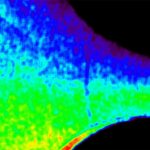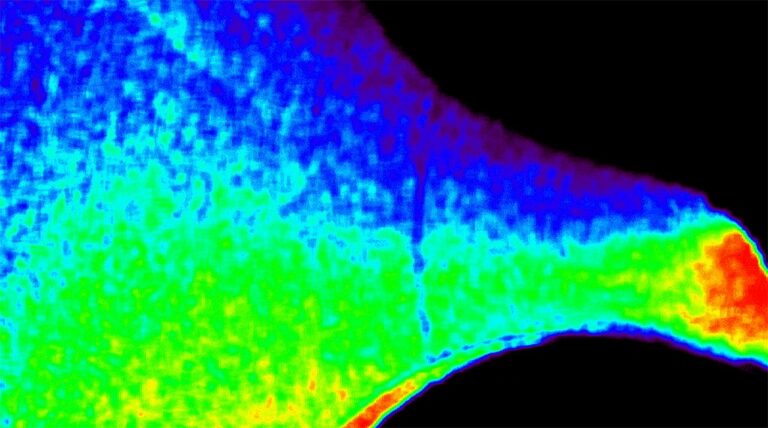In a remarkable breakthrough that bridges optics and quantum mechanics, scientists have engineered a crystal capable of trapping light — and in doing so, they’ve uncovered a new kind of quantum link. This discovery could redefine how we understand quantum interactions and push forward technologies like quantum computing, secure communication, and next-gen photonics.
The Discovery: Trapping Light in a CrystalLight is famously difficult to pin down. Unlike matter, it moves at a staggering speed — 299,792,458 meters per second — and tends to scatter, reflect, or pass through materials.
But researchers at the intersection of photonics and quantum physics have developed a photonic crystal structure that can effectively trap light.These crystals are not your everyday minerals. They are meticulously engineered structures with repeating patterns that interact with electromagnetic waves in highly specific ways.
By designing the crystal to exhibit a photonic band gap, scientists have created a condition in which certain wavelengths of light cannot propagate, essentially causing them to become “stuck” inside the crystal.But what truly astonished the research team wasn’t just that light was being trapped — it was how it behaved once confined.
The Unexpected Quantum LinkOnce the light was trapped, the researchers observed a surprising phenomenon: photons inside the crystal began to exhibit correlated behavior, interacting in a way that hinted at a previously unseen quantum connection.This isn’t typical of light. Photons are bosons — particles that normally don’t interact with one another.
However, in the unique environment created within the photonic crystal, the researchers noticed that when one photon was affected, another responded in a way that suggested a shared quantum state. This entanglement-like behavior could pave the way to a new understanding of light-matter interaction.In simpler terms: by building a cage for light, scientists discovered a new kind of quantum thread tying particles together.
Why This Matters: Applications in Quantum Technology
This accidental quantum connection has major implications:
1. Quantum ComputingQuantum computers rely on entangled particles — usually electrons or ions — to perform calculations far beyond the reach of classical machines. If photons can now be controlled and linked in the same way, it opens the door to photonic quantum computing, a field that promises ultra-fast, energy-efficient quantum processors that use light instead of electrical current.
2. Quantum CommunicationLight is already used in fiber optic communication, but the discovery of quantum links within photonic crystals could revolutionize quantum cryptography. Entangled photons enable perfectly secure communication channels, thanks to the laws of quantum mechanics. If these new links can be controlled and scaled, they could enhance global internet security infrastructure.
3. Next-Gen Sensors and Photonic DevicesSensors based on quantum light could detect changes at the molecular or even atomic level, providing breakthroughs in medicine, environmental science, and materials engineering. Trapping and manipulating light in a controlled crystal structure allows for ultra-precise measurements, ideal for cutting-edge applications.
How They Did It: The Role of Photonic Band GapsThe crystal was designed with nanometer-scale precision to create a photonic band gap — a range of light frequencies that the crystal does not allow to pass. The structure was so fine-tuned that it created a kind of optical “cage,” reflecting light within and preventing it from escaping.To everyone’s surprise, the photons confined within this cage didn’t just bounce around randomly. They started to exhibit collective behaviors. By analyzing these patterns using advanced spectroscopy and quantum optics techniques, the scientists were able to detect signs of quantum correlations never before seen in such systems.
A Step Toward Quantum-Integrated Circuits?For years, the dream of integrated quantum circuits — tiny chips combining classical and quantum elements — has driven intense research. This new ability to control and link photons inside solid-state devices brings us closer to that goal.Imagine chips where photons trapped in microscopic crystals handle quantum information, while conventional electronics manage the rest. It’s a vision of quantum-classical hybrid technology — small, scalable, and more stable than traditional atom- or ion-based quantum devices.What’s Next?While this is an early-stage discovery, it sets the stage for years of innovation.
Researchers are now focused on:Enhancing the strength and controllability of these quantum links.Scaling the crystal structures for practical devices.Integrating this technology into existing silicon-based platforms.Testing the limits of light-based entanglement in more complex environments.
Conclusion: A Bright Future for Quantum LightThe idea of trapping light sounds like science fiction, but it’s now a tangible scientific achievement. More than that, the unexpected emergence of a new kind of quantum link redefines our understanding of photons and their potential.This fusion of materials science, optics, and quantum mechanics could lead to a future where light is not just a tool for seeing — but a building block for an entirely new technological era.

















+ There are no comments
Add yours